Part 2: Eugene Bullard, Florence Embry Jones, Willie Lewis Valaida Snow and Bill Coleman
This is the continuing story of how the Montmartre section of Paris was transformed into a booming Harlem-style Jazz district between the World Wars. Jazz arrived in Paris with the wild success of Josephine Baker in the mid-1920s. She triggered “Le Tumulte Noir,” an insatiable demand for black American music, culture and personalities, drawing in her wake African-American musicians, singers, entertainers and black expatriates to Harlem-on-the-Seine.
Josephine Baker’s nightclub, Bricktop’s cabaret, Zellis Royal Box, Chez Florence and the Jazz bars of Paris became all the rage among an international set of the chic and elite. Yet rarely have the women who launched and sustained this community received full credit for their vanguard role in this distant outpost of the Harlem Renaissance.
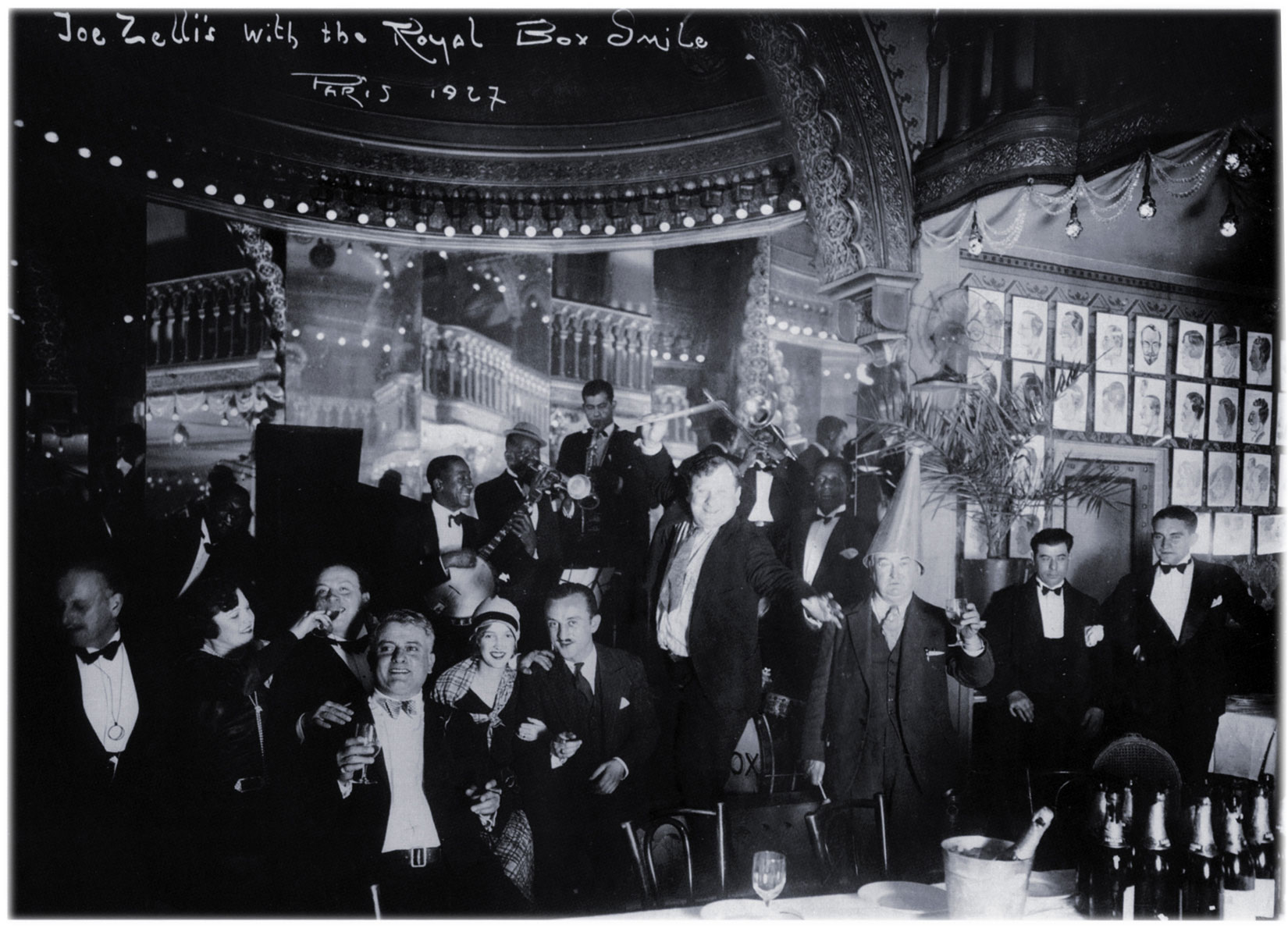
Musicians on the bandstand at Zellis, L to R: pianist Glover Compton, Ferdie Allen (banjo), Cricket Smith (trumpet), Frank Goudie (alto sax) and Gene Bullard (drums).
Zellis Royal Box
“People felt they had to come to Zelli’s.
It was the only place in Paris that was open all night
and everybody who was anybody went there.”
— Gene Bullard
During the late-1920s Zellis Royal Box was the wildest booziest club in the Montmartre district of Paris. Gene Bullard hired the musicians, ran the band and played drums (badly, by his own admission). Bullard operated several American-style bars and had managed Le Grand Duc. Likewise, owner and impresario Joe Zelli ran several cabarets, including The Tempo Club after housrs upstairs for musicians.
Reed player Sidney Bechet briefly played clarinet at Zellis. The club featured piano player Glover Compton, a formidable fellow who cut a wide swath. In a storied career, Compton had been a professional cakewalk dancer, and a ragtime and stride piano player in the Willie-the-Lion Smith mold. Compton was wounded in a celebrated shooting in the streets of Montmartre. The antagonist, Sidney Bechet, was imprisoned for months before his expulsion from France.
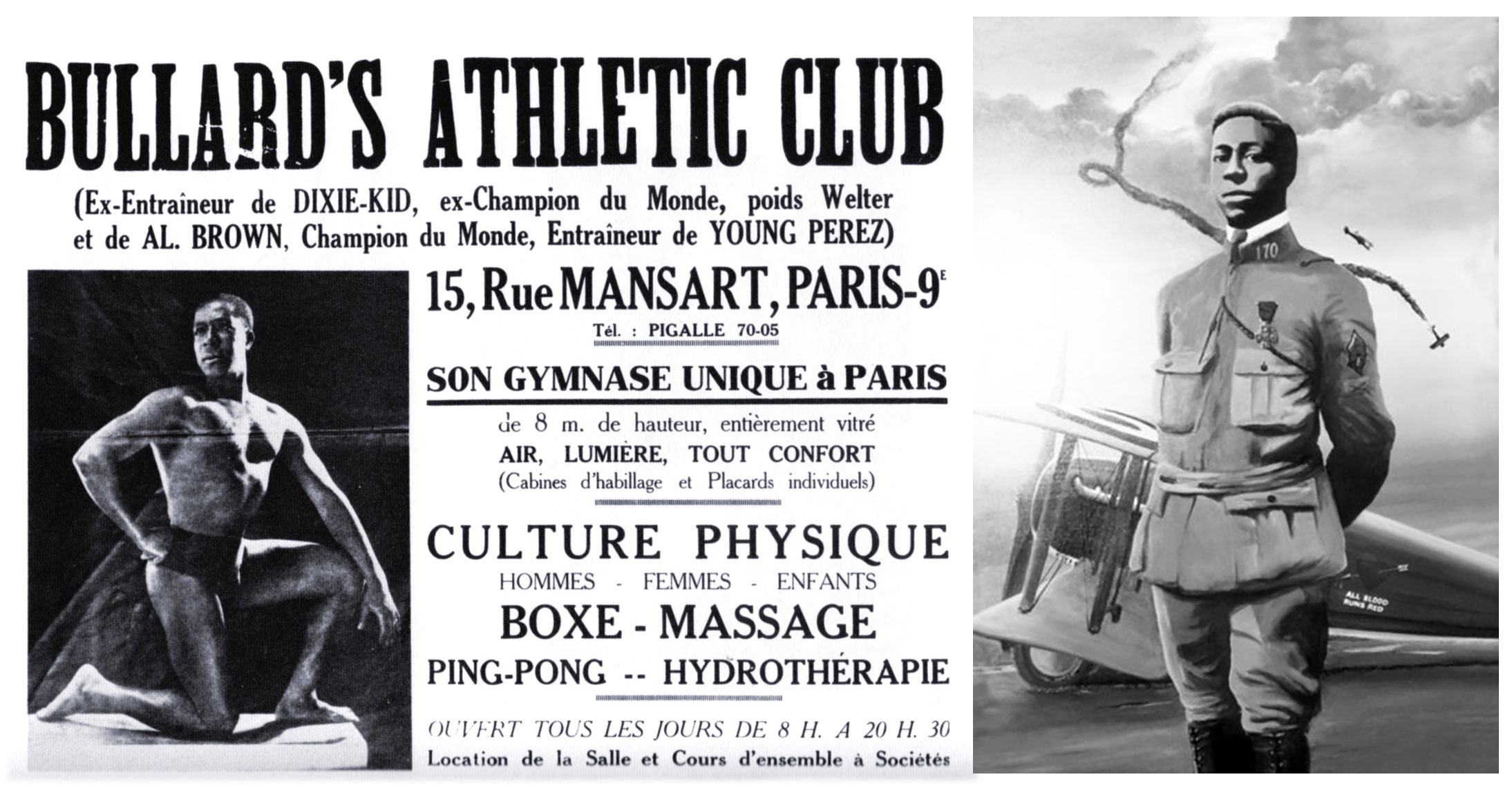
Bullard Air Ace and Boxer – Athletic Club. Eugene Bullard was a World War I air ace and former boxing champion.
Eugene Bullard
Eugene (Gene) Jacques Bullard (1895-1961) was an African-American First World War air combat pilot who’d fought for France. He was a big personality and fulcrum of the black community in Paris, functioning as an informal yet powerful counselor and enforcer at large.
Bullard successfully parlayed his status as a former boxing champion into a popular gymnasium. Bullard’s Athletic Club catered to both elite French Parisians and African Americans. Gyms were a popular antidote to the partying of Paris, an attempt to counteract the champagne-soaked nights with exercise, massage, hydrotherapy or coaching in boxing. And Bullard specialized in training championship pugilists.
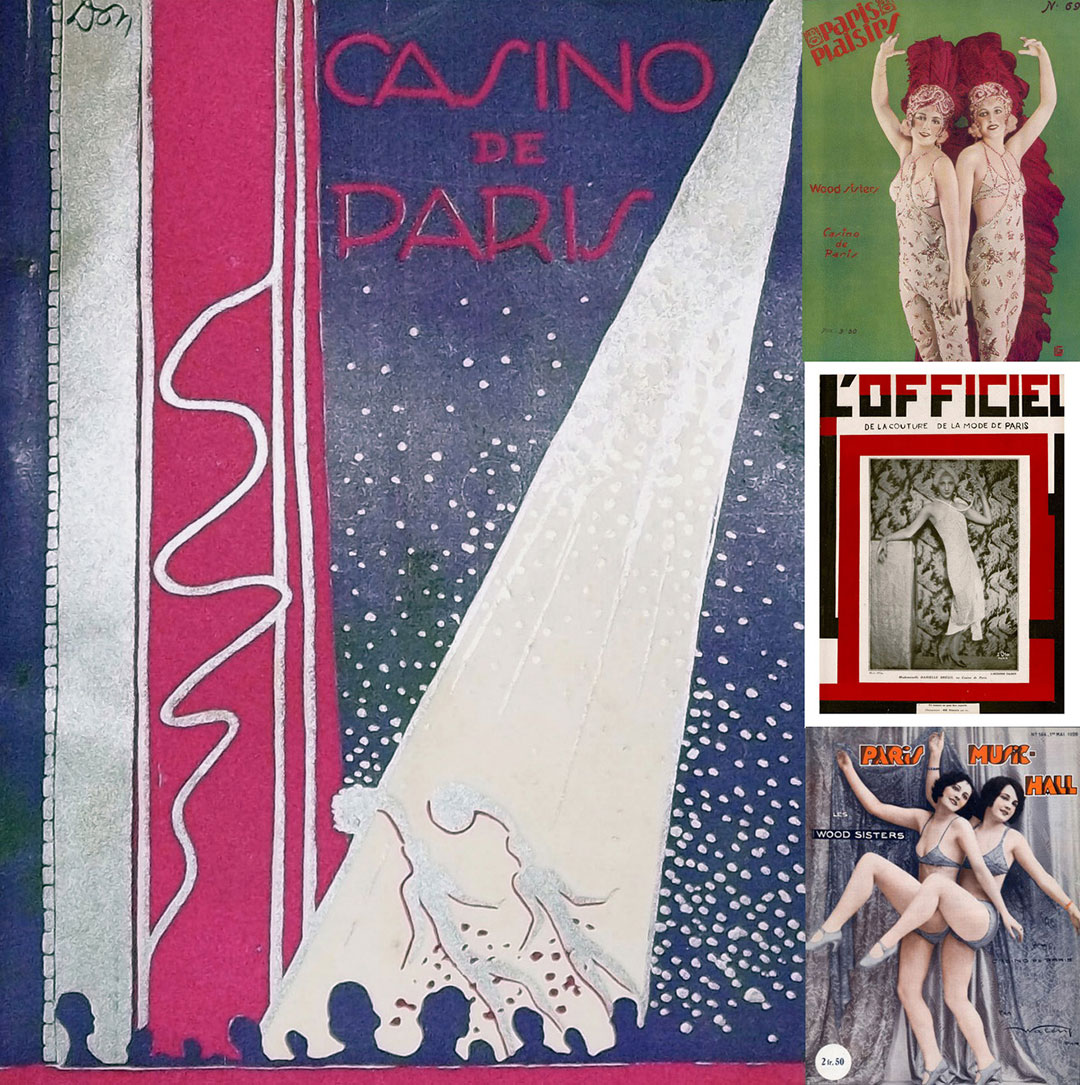
Casino de Paris, 1928. Casino de Paris was one of the earliest nightclubs presenting African American jazz bands in Paris.
Early Jazz in Paris
A good source on early jazz in France that’s based largely on interviews is Jazz Away from Home by Chris Goddard (1979). He notes that in the early 1920s Paris was quick to adopt African-American music, though French understanding of jazz developed slowly. And in truth it was still just emerging in America.
For most of the 1920s “Jazz” in France was almost any music played by African-American musicians no matter how crudely, as long as there was a drum kit and some horns. Most so-called jazz in Paris prior to around 1927 was a mélange of ragtime, brass band music and corny effects on horns, driven by excitable drummers making as much noise as possible.
A very good French pianist and composer, Alain Romans, performed with many of the visiting and expatriate Americans. He described for Goddard the rudimentary jazz situation in 1920s Paris:
“The drummer used to be in front and he had all these different things for making noises — cow bells and so forth — he used to throw his sticks about and sometimes even stick his tongue out. The drummer was the big attraction and the musicians used to be behind him on the stand. Little by little they learned they had to make some music as well.”
French cabaret and nightclub owners often hired black Americans who were not musicians but dancers to run “jazz orchestras” or drummers without training. With few exceptions, the French were unable to swing or improvise until the mid-1930s when Django Reinhardt and the Federation of Hot Clubs became the nucleus around which a native jazz movement coalesced.
Podcast audio:
01-Early jazz in Paris: Alain Romans.mp3 1:46
02-Divas of Montmartre: Snow and Baker.mp3 5:18
03-Harlem on the Seine.mp3 5:15
04-Harlem on the Seine: Coleman, Boudons, Bullards Gym & Decline of Montmartre.mp3 7:43
Florence Embry Jones and Chez Florence
Florence Embry Jones (1892-1932) and her slightly older husband, Palmer Jones lived in Paris. Piano player Palmer Jones (1888-1928) had been performing successfully for quite a while in Europe on his own, with Louis Mitchell at Casino de Paris, and accompanying his pretty wife Florence.
The couple opened numerous Montmartre nightclubs that became legend. Their best-known venue actually belonged to drummer and bandleader Louis Mitchell. Rebranded Chez Florence it was far more successful under the couple’s management. It featured the top African American entertainers living in or visiting France: multi-instrumentalist Benny Carter, singer Alberta Hunter, tap dancer Bill “Bojangles” Robinson or the orchestras of Freddy Johnson, Leon Abbey, Bobby Martin, Eddie South, Willie Lewis and others.

Le Boeuf sur le toit 1925 card. Among the Jones’ several famous nightclubs was Le Boeuf Sur Le Toit (The Cow On The Roof)
Like cabaret operator Bricktop, Embry Jones cultivated a following among the rich and sophisticated, especially the English (including the Prince of Wales), expatriates, Russian princes and affluent Americans such as the Vanderbilts. Gene Bullard declared it, “the leading place of its kind in Montmartre, where only first class clients can be found.”
But Florence’s haughty airs annoyed her compatriots and the couple was often away from Paris, remaining in America after 1927. Palmer Jones died in 1928 and Florence in 1932. Poet laureate of the Harlem Renaissance, Langston Hughes, offered this tart remembrance in his autobiography:
“Petite Florence Embry, lovely vision in brown, was the reigning queen of Montmartre after midnight. Today, even after her death, “Chez Florence” is still a fashionable club. And the memory of the very pretty, very reserved little brownskin woman who paid attention only to royalty or to people with a great deal of money, still lingers in the minds of international nightlifers.”
Willie Lewis and his Entertainers
Willie Lewis and his Entertainers performed regularly at Chez Florence 1935-38. Lewis was a handsome master of ceremonies, fair singer and skilled bandleader. He ran the best Jazz orchestra in Europe during the late 1930s. It was a solid swing band that recorded more than fifty sides in Paris and Zurich. The line-up was four reeds, three brasses, a good piano player and full rhythm section, driven by the fine bassist Wilson Meyers who co-arranged most of their 1937 session.
Christopher Columbus – Willie Lewis and his Entertainers, 1936
Swing, Brother, Swing – Willie Lewis and his Entertainers, 1937
Swinging For A Swiss Miss – Willie Lewis and his Entertainers, 1937
Ol’ Man River – Willie Lewis and his Entertainers, 1937
Grove Dictionary of Jazz calls Willie Lewis, “an able showman, singer and instrumentalist, who engaged the best players he could afford and presented musicianly ensembles. His bands played mostly for royalty and the well-to-do patrons of Europe’s best hotels, nightclubs and ballrooms.”
The orchestra featured the top African-American jazz instrumentalists living in or visiting Paris: Benny Carter (briefly during 1935, mostly playing trumpet and arranging), Bill Colman (trumpet), the elegant pianist Herman Chittison and the impressive, New Orleans-born, 6’ 5” expatriate tenor saxophone and clarinet player, Frank “Big Boy” Goudie.
Frank Big Boy Goudie in Paris, 1924-39 http://www.jazzhotbigstep.com/752934.html
- (Page 1 of 2)
- Next page →

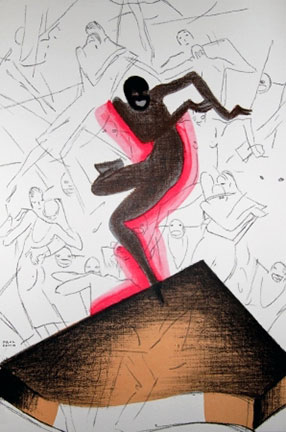
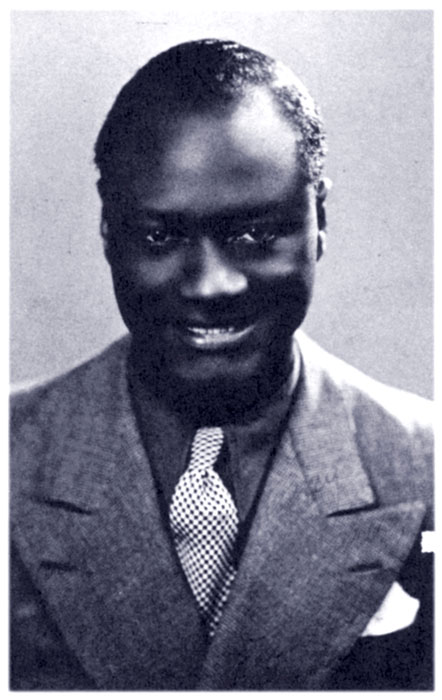
Ah yes! Valaida Snow. Those songs so good, want to dance just thinking about them. Minnie the Moocher, St.Louis Blues Jazz standards performed by so many. One of my favorite singers today did her version of “You Bring Out The Savage In Me.” Can you guess the name? Give up? Starts with “C” fellow (: